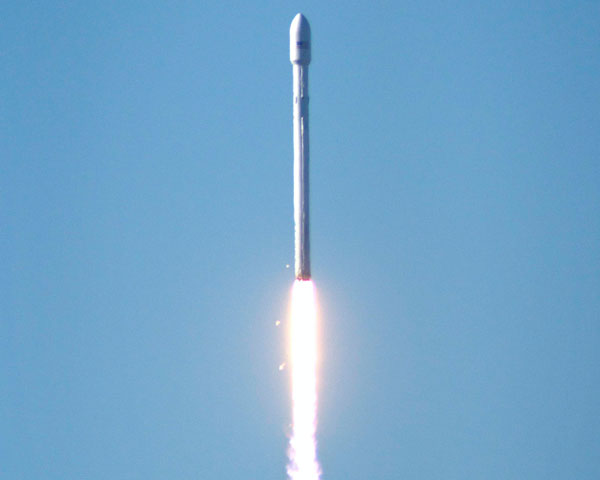Nuri, a space launch vehicle, succeeded on its third launch in South Korea

[A spaceship, Photo Credit to Pexels]
On May 25, 2023, a space launch vehicle named Nuri was successfully launched to the application orbit for the third time.
Nuri,the Korea Space Launch Vehicle-II (KSLV-II), is Korea's unique vehicle, made solely from Korean technology. All of the processes involved in its production: planning, constructing, and experimenting, are only done through its national technique.
Nuri is a three-stage launch vehicle that can directly put a 1.5-ton application satellite into a sun-synchronous orbit 600 to 800 km above the earth. Nuri is 47.2 meters long, and weighs 200 tons.
Scientists derived the name from the word “nuri” ,a Korean word which means “world.”
Scientists constantly attempted to improve the quality of Nuri, launching it numerous times.
Recently, scientists have launched the space vehicle for the third time.
The first launch had also succeeded in launching, but it failed to stay in orbit because the third engine had combusted much earlier than expected.
Although it could not stay on the orbit, as a first trial, it had achieved its purpose, which was to launch properly.
Based on the experience from the first launch, scientists attempted a second launch 8 months later.
The second launch of Nuri had succeeded not only in blasting powerfully, but also staying on the orbit. Through the second launch, South Korea was able to prove their strong scientific skills on rockets.
After the second launch, scientists attempted the third launch after some refinements.
Before the third launch, there were some technical issues with computer connections, which led to postponing the day of launching. Luckily, the problem was fixed, and the scientists were able to launch Nuri.
Nuri was launched in Jeollanam-do Goheng, Naro Space Center, South Korea and itsoared through the sky for 18 minutes and 58 seconds.
Furthermore, Nuri was released to space by multiple steps. As Nuri is a three-stage launch, it requires three engines to be separated. The first stage consists of four clustered 75-ton engines, the second stage has one 75-ton engine, and the third stage requires a 7-ton engine.
The last step of separating the engine is assessed as the trickiest step. The rocket needs to fly 7.5 kilometers per second in order for the step to work.
These steps need to be done in a few minutes. A small mistake in conducting these steps can lead to a failure of launching the rocket.
Nuri separated the first engine 125 seconds after launch. After around two minutes, it was able to separate the second engine.
Nuri’s job after the launch is to locate the satellites, known as passengers, it carried.
Nuri was able to release the satellites in a 20 second interval.
Nuri has released a total of 8 satellites, and 6 of them have contacted the control tower.
Currently, scientists are working on contacting the other two satellites that have not yet contacted the control tower.
Through launching Nuri, the mission of only using the national technology to release a space vehicle to the universe has been successfully accomplished.

- Siyeon Kim / Grade 10
- JungKyung High School

![THE HERALD STUDENT REPORTERS [US]](/assets/images/logo_student_us.png)
![THE HERALD STUDENT REPORTERS [Canada]](/assets/images/logo_student_ca.png)
